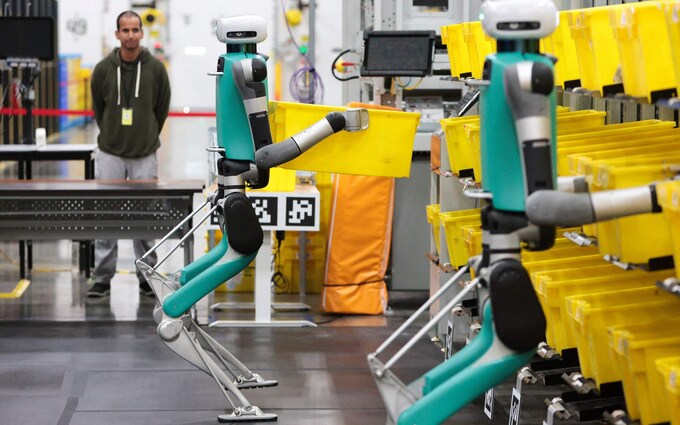Introduction to Sports Nutrition
Fueling your body for optimal performance is a key aspect of any athlete’s journey. Whether you’re a professional runner, weightlifter, or just someone who loves to hit the gym, sports nutrition plays a vital role in helping you reach your fitness goals. But have you ever wondered how the products that fuel your workouts make their way into your hands? Enter picking robots – the unsung heroes behind the scenes of sports nutrition distribution! These innovative machines are revolutionizing the industry, ensuring that you get exactly what you need when it comes to nourishing your body and achieving peak performance. In this blog post, we’ll dive into how these picking robots work and explore their incredible capabilities. So grab your protein shake and let’s jump right in!
Capabilities of Picking Robots
Picking robots have revolutionized the sports nutrition industry by streamlining warehouse operations and improving efficiency. These advanced machines are equipped with state-of-the-art technology that allows them to perform a wide range of tasks with precision and speed.
One key capability of picking robots is their ability to accurately locate and pick specific items from shelves or bins. Using sophisticated image recognition systems, these robots can quickly identify products based on their shape, size, and packaging. This ensures that the right products are selected every time, reducing errors and speeding up order fulfillment.
Another impressive feature of picking robots is their agility in navigating complex warehouse environments. These machines are designed to move seamlessly through narrow aisles, avoiding obstacles along the way. With advanced sensors and mapping algorithms, they can adapt to changes in their surroundings and make real-time adjustments as needed.
In addition to picking items, these robots can also handle packaging tasks such as placing products into boxes or containers. They are programmed to follow specific packing instructions, ensuring that each package is properly arranged and secured for shipment.
As technology continues to advance at an unprecedented pace, the capabilities of picking robots will only continue to improve further. Their potential applications within sports nutrition go far beyond just warehousing. From assisting with quality control inspections to providing valuable data analytics insights, these versatile machines offer endless possibilities for enhancing operational efficiency. The future holds exciting opportunities for integrating artificial intelligence (AI) and machine learning algorithms into this field. This would allow picking robots to continuously adapt and optimize their performance.
The Evolution of Picking Robots in the Industry
Over the years, there has been a significant evolution in the field of picking robots, especially when it comes to sports nutrition. These robots have come a long way from their primitive beginnings and have now become highly advanced machines that can efficiently handle various tasks related to sorting and packaging.
In the early days, picking robots were basic machines that could only perform simple pick and place operations. They were limited in terms of speed, accuracy, and versatility. However, with advancements in technology and artificial intelligence, these robots have undergone a remarkable transformation.
Today’s picking robots are equipped with sophisticated sensors and cameras that enable them to identify different types of sports nutrition products accurately. They can precisely pick up items without causing any damage or contamination. Moreover, these robots can work at high speeds, significantly improving productivity on assembly lines.
One of the key developments in picking robot technology is the integration of machine learning algorithms. These algorithms allow the robot to learn from its interactions with different objects and adapt its movements accordingly. This not only enhances efficiency but also reduces errors caused by variations in product size or shape.
Another crucial aspect is the ability of modern picking robots to work collaboratively with human workers. These cobots (collaborative robots) can assist humans by taking care of repetitive tasks while allowing them to focus on more complex activities that require cognitive skills.
Furthermore, advancements such as cloud computing and internet connectivity have enabled remote monitoring and control of picking robots. This means that manufacturers can now oversee multiple production lines from a central location, ensuring optimal performance across all facilities.
Common Misconceptions about Picking Robots
1. Picking robots are slow and inefficient:
One common misconception about picking robots is that they are slow and inefficient compared to human workers. However, this couldn’t be further from the truth. Picking robots have been designed to operate at high speeds, with advanced sensors and algorithms that allow them to quickly identify and pick items from shelves or bins. In fact, these robots can outperform humans in terms of speed and accuracy, leading to increased productivity in sports nutrition warehouses.
2. Picking robots will replace human workers:
While it’s true that picking robots can automate certain tasks in the sports nutrition industry, they are not intended to completely replace human workers. Instead, their purpose is to assist humans by handling repetitive and physically demanding tasks, allowing employees to focus on more complex job responsibilities such as quality control or customer service. Picking robots act as valuable tools rather than substitutes for human labor.
3. Picking robots lack flexibility and adaptability:
Another misconception is that picking robots are rigid machines incapable of adapting to changing circumstances or new products in the market. However, modern picking robot systems utilize artificial intelligence (AI) technologies such as machine learning algorithms which enable them to learn from experience and adjust their actions accordingly. These AI-powered systems can easily adapt to variations in product types, packaging sizes, or even changes in warehouse layouts without requiring significant reprogramming efforts.
4. Picking robots require extensive training before implementation:
Contrary to popular belief, implementing a picking robot system does not necessarily require extensive training for warehouse staff members. Most robotic solutions available today are designed with user-friendliness in mind; they feature intuitive interfaces that make programming straightforward even for non-technical personnel. This means that companies can integrate these systems into their operations relatively quickly with minimal disruption while providing necessary training only when needed.
Future Outlook for Picking Robots in Sports Nutrition
As technology continues to advance at a rapid pace, the future of picking robots in the sports nutrition industry looks promising. These automated machines are revolutionizing the way products are picked, packed, and shipped, providing increased efficiency and accuracy.
With ongoing developments in artificial intelligence and machine learning algorithms, picking robots are becoming even smarter and more adaptable. They can now handle a wider range of items with different shapes, sizes, and weights. This means that no matter how diverse your sports nutrition inventory is, these robots can efficiently handle it all.
The integration of picking robots into sports nutrition operations not only improves productivity but also reduces errors caused by human fatigue or oversight. With fewer mistakes during order fulfillment process comes improved customer satisfaction rates—a crucial factor for success in any business.
Looking ahead into the future, we can expect further advancements such as enhanced vision systems that will enable picking robots to identify damaged or expired products accurately. Additionally, innovations like collaborative robotics will allow humans to work alongside these machines seamlessly.




